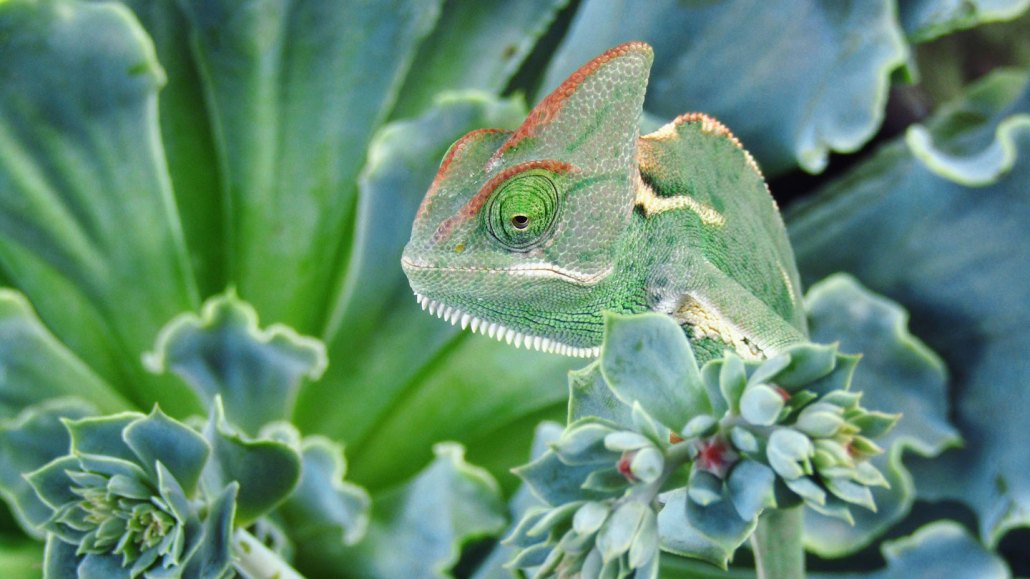Scientists Say: Camouflage
This hide-in-plain-sight tactic helps some organisms avoid becoming someone’s lunch

A chameleon’s skin color shifts to match its surroundings as it climbs across this succulent plant.
Lauren Dockery/500px/Getty Images
Share this:
- Share via email (Opens in new window) Email
- Click to share on Facebook (Opens in new window) Facebook
- Click to share on X (Opens in new window) X
- Click to share on Pinterest (Opens in new window) Pinterest
- Click to share on Reddit (Opens in new window) Reddit
- Share to Google Classroom (Opens in new window) Google Classroom
- Click to print (Opens in new window) Print
Camouflage, (noun, verb, “KAM-oh-flawg”)
Camouflage is a disguise that allows an organism to blend into its surroundings and avoid being seen. An organism’s shape, pattern, color or even movement are all traits that can provide camouflage.
Camouflage allows an organism to hide in plain sight — whether predator or prey. A leopard’s dappled fur blends into the leaf shadows and tree bark when it lounges on a branch. That helps this predator sneak up on unsuspecting prey. But prey also can benefit from camouflage. A stick insect looks, and even moves, like a dry twig. And that may help it avoid becoming someone’s lunch.
Plants use camouflage too. For example, a plant called Fritillaria delavayi may have developed its drab coloring in response to humans collecting it. For over 2,000 years, this little plant has been valued in traditional Chinese medicine — and harvested by many people. Lithops — or “stone plants” — are another example. These plants avoid getting eaten by blending into arid, pebbly landscapes.
For some species, camouflage is more than just colors and patterns. The flat-tail horned lizard (Phrynosoma mcallii) flattens its body against the sand. The lizard’s unique body shape lacks obvious angles. That means the desert sun casts no shadows that might give away its presence.
Some organisms can even alter their appearance in real time. The panther chameleon (Furcifer pardalis) needs only a minute or two to color-shift to match nearby surfaces. This territorial reptile needs only a minute more to change again. This time, to adopt vivid rainbow-like hues for challenging a competitor.
Some organisms go beyond just blending in. The glass frog, which has translucent skin, appears to vanish when it naps. How? The frog shuttles red blood cells into its organs when it sleeps. This turns the frog partially invisible.
Humans make use of camouflaged clothing, too. The most common applications appear on military or hunting gear.
The word camouflage can also be used as a verb. For instance, if someone dons hunting gear, you might describe the action as the person having camouflaged themselves.
In a sentence
A panda’s splotchy black-and-white coloring allows it to blend into the shadows.







